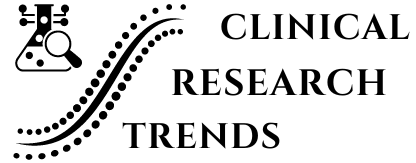Collaborative Research Models for Academia and Industry Partnerships
In the rapidly evolving landscape of biomedical research, the traditional boundaries between academia and industry are becoming increasingly blurred. As the complexity of scientific challenges continues to grow, and the demand for innovative solutions intensifies, collaborative research models that foster synergistic partnerships between academic institutions and industry players are emerging as a powerful paradigm. These collaborations leverage the complementary strengths of both sectors, combining academic expertise, intellectual curiosity, and cutting-edge research with industry's resources, commercialization capabilities, and market insights.
The Rationale for Academia-Industry Collaborations
The pursuit of groundbreaking discoveries and the development of transformative therapies often require a multidisciplinary approach, substantial resources, and a diverse set of skills and expertise. By forging strategic partnerships, academic institutions and industry organizations can pool their collective knowledge, resources, and capabilities, creating a fertile ground for innovation and accelerating the translation of research findings into tangible solutions that benefit patients and society.
Leveraging Complementary Strengths
Academic institutions are renowned for their intellectual capital, fundamental research capabilities, and the freedom to explore novel and high-risk ideas. On the other hand, industry partners bring valuable resources, such as funding, infrastructure, and expertise in product development, commercialization, and regulatory affairs. By combining these complementary strengths, collaborative research models can drive scientific progress while ensuring the practical application and dissemination of discoveries.
Addressing Complex Challenges
Many contemporary scientific challenges, such as developing personalized therapies, combating emerging infectious diseases, or tackling neurodegenerative disorders, require a multidisciplinary approach and diverse expertise. Academia-industry collaborations facilitate the convergence of diverse perspectives, methodologies, and resources, enabling researchers to tackle these complex challenges more effectively.
Accelerating Translation and Commercialization
Academic research often generates groundbreaking discoveries and innovative concepts, but the path to translating these findings into commercially viable products or clinical applications can be arduous. Industry partners can provide the necessary resources, expertise, and infrastructure to bridge this gap, accelerating the translation and commercialization of academic research, ultimately benefiting patients and society.
Fostering Knowledge Exchange and Cross-Pollination
Collaborative research models promote the exchange of knowledge, ideas, and best practices between academia and industry. This cross-pollination of expertise can lead to novel insights, innovative approaches, and the development of cutting-edge technologies that drive scientific progress and fuel economic growth.
Enhancing Workforce Development
Academia-industry collaborations offer unique opportunities for workforce development and training. Students and early-career researchers can gain exposure to industry practices, while industry professionals can benefit from academic expertise and cutting-edge research methodologies. This exchange of knowledge and skills contributes to the development of a highly skilled and adaptable workforce, essential for driving innovation in the biomedical sector.
Models of Academia-Industry Collaboration
Academia-industry collaborations can take various forms, each tailored to the specific needs and objectives of the partners involved. Here are some common models:
Sponsored Research Agreements
In this model, industry partners provide funding and resources to academic institutions to conduct specific research projects aligned with their interests. These agreements often include provisions for intellectual property (IP) rights, publication rights, and potential commercialization opportunities.
Joint Research Centers or Institutes
Academic institutions and industry partners can establish joint research centers or institutes that bring together researchers, resources, and expertise from both sectors. These collaborative entities foster interdisciplinary research, knowledge exchange, and the pursuit of shared scientific goals.
Public-Private Partnerships
Public-private partnerships (PPPs) involve collaborations between academic institutions, industry partners, and government agencies or non-profit organizations. These partnerships leverage diverse resources and expertise to address complex challenges of public interest, such as developing treatments for neglected diseases or advancing sustainable healthcare solutions.
Licensing and Technology Transfer
Academic institutions often license their intellectual property (IP) or technologies to industry partners for further development, commercialization, and market deployment. This model facilitates the translation of academic discoveries into practical applications while generating revenue streams for the academic institution.
Entrepreneurial Ventures and Spin-Offs
In some cases, academic researchers and industry partners collaborate to establish entrepreneurial ventures or spin-off companies based on promising research findings or technologies. These ventures provide a pathway for commercializing academic discoveries while fostering economic growth and job creation.
Collaborative Research Consortia
Research consortia bring together multiple academic institutions, industry partners, and other stakeholders to collaborate on large-scale, multi-disciplinary research projects. These consortia leverage diverse expertise, resources, and perspectives to tackle complex challenges that may be beyond the capabilities of any single organization.
Student and Researcher Exchanges
Academia-industry collaborations can involve the exchange of students, postdoctoral researchers, or faculty members between academic institutions and industry partners. These exchanges facilitate knowledge transfer, skill development, and the cross-pollination of ideas and perspectives.
Benefits and Challenges of Academia-Industry Collaborations
While academia-industry collaborations offer numerous benefits, they also present several challenges that must be addressed to ensure successful and productive partnerships
Benefits:
Resource Sharing: Collaborations enable the pooling of financial resources, research infrastructure, and specialized expertise, allowing partners to undertake ambitious projects that may be beyond the capabilities of individual organizations.
Knowledge Exchange and Cross-Fertilization: The exchange of knowledge, ideas, and methodologies between academia and industry can lead to novel insights, innovative approaches, and the development of cutting-edge technologies.
Accelerated Translation and Commercialization: Industry partners can provide the necessary resources, expertise, and infrastructure to bridge the gap between academic discoveries and commercial applications, accelerating the translation and dissemination of research findings.
Workforce Development: Collaborative research models offer unique opportunities for training and skill development, contributing to the creation of a highly skilled and adaptable workforce capable of driving innovation in the biomedical sector.
Economic Growth and Job Creation: Successful collaborations can lead to the development of new products, services, or technologies, fostering economic growth, job creation, and the establishment of new entrepreneurial ventures.
Challenges:
Aligning Objectives and Priorities: Academic institutions and industry partners may have different priorities, timelines, and objectives, which can create tensions or misalignments in collaborative research projects.
Intellectual Property (IP) and Publication Rights: Negotiating and managing IP rights, publication rights, and confidentiality agreements can be complex, requiring careful consideration and legal expertise.
Cultural Differences: Academia and industry often have distinct organizational cultures, decision-making processes, and communication styles, which can lead to misunderstandings or conflicts if not properly addressed.
Conflict of Interest Concerns: Collaborations with industry partners may raise concerns about potential conflicts of interest, particularly in areas such as research integrity, objectivity, and the dissemination of findings.
Regulatory and Ethical Considerations: Collaborative research projects involving human subjects, animal studies, or the development of regulated products (e.g., drugs, medical devices) must navigate complex regulatory and ethical frameworks, which can be challenging for both academic and industry partners.
Sustainability and Long-Term Commitment: Maintaining successful collaborations often requires long-term commitment, sustained funding, and effective communication and coordination between partners, which can be challenging in dynamic research environments.
Balancing Confidentiality and Open Science: While industry partners may prioritize confidentiality and proprietary information, academic institutions often value open science and the dissemination of knowledge, creating potential tensions in collaborative research projects.
Strategies for Successful Academia-Industry Collaborations
To maximize the benefits and mitigate the challenges of academia-industry collaborations, various strategies and best practices can be implemented:
Establishing Clear Governance and Communication Structures: Defining clear governance structures, decision-making processes, and communication channels from the outset can facilitate effective collaboration, minimize misunderstandings, and ensure alignment between partners.
Fostering Trust and Mutual Understanding: Building trust and fostering mutual understanding between academic and industry partners is crucial. This can be achieved through open communication, transparency, and a genuine appreciation for each partner's perspectives, priorities, and organizational cultures.
Developing Comprehensive Agreements and IP Management Strategies: Comprehensive agreements that clearly define IP rights, publication rights, confidentiality provisions, and revenue-sharing arrangements should be established at the outset of collaborations. Effective IP management strategies can help protect the interests of all partners while promoting the dissemination of knowledge.
Promoting Interdisciplinary and Cross-Functional Collaboration: Encouraging interdisciplinary and cross-functional collaboration among researchers, project managers, legal experts, and technology transfer professionals can facilitate effective communication, problem-solving, and the successful execution of collaborative research projects.
Investing in Training and Capacity Building: Providing training and capacity-building opportunities for researchers, project managers, and support staff can enhance their understanding of the unique challenges and requirements of academia-industry collaborations, fostering a more collaborative and productive environment.
Leveraging Intermediaries and Facilitators: Engaging intermediaries or facilitators, such as technology transfer offices, industry liaison offices, or specialized consultants, can help bridge the gap between academia and industry, facilitate negotiations, and ensure smooth collaboration.
Continuous Evaluation and Adaptation: Regularly evaluating the progress, challenges, and outcomes of collaborative research projects can help identify areas for improvement and enable partners to adapt and refine their strategies for more effective collaboration.
Promoting Diversity and Inclusion: Embracing diversity and fostering an inclusive environment within collaborative research teams can enhance creativity, innovation, and the ability to tackle complex challenges from multiple perspectives.
Engaging Stakeholders and Building Public Trust: Proactive engagement with stakeholders, including patient advocacy groups, policymakers, and the general public, can help build trust, address concerns, and ensure that collaborative research efforts align with societal needs and values.
By implementing these strategies and fostering a culture of collaboration, academia-industry partnerships can unlock the full potential of biomedical research, driving scientific progress, and ultimately improving human health and well-being.
Notable Labs: Leveraging Academia-Industry Partnerships
Notable Labs exemplifies the power of academia-industry collaborations by strategically partnering with leading academic institutions to advance its clinical research and drug development efforts. By tapping into the vast intellectual capital and innovative research methodologies of academia, Notable Labs enhances its ability to tackle complex scientific challenges and accelerate the translation of research findings into practical applications. These partnerships provide Notable Labs with access to cutting-edge technologies, novel therapeutic targets, and diverse expertise, fostering a fertile ground for groundbreaking discoveries.
One of the key benefits of these collaborations for Notable Labs is the ability to pool resources and share knowledge, which significantly accelerates the drug development pipeline. Academic partners contribute fundamental research capabilities and a deep understanding of disease mechanisms, while Notable Labs brings expertise in commercialization, regulatory affairs, and large-scale clinical trial execution. This synergistic approach not only enhances the efficiency and effectiveness of research projects but also ensures that innovative therapies reach patients more swiftly and safely. Through these strategic partnerships, Notable Labs demonstrates how academia-industry collaborations can drive scientific progress, foster innovation, and ultimately improve patient
Future Directions and Emerging Trends
As the biomedical research landscape continues to evolve, academia-industry collaborations are poised to play an increasingly pivotal role. Several emerging trends and future directions are shaping the trajectory of these collaborative models:
Open Innovation and Precompetitive Collaborations
The concept of open innovation, where organizations share ideas, resources, and intellectual property in the early stages of research, is gaining traction. Precompetitive collaborations among multiple academic and industry partners can accelerate the exploration of fundamental scientific questions and enable the development of shared platforms or technologies.
Public-Private-Patient Partnerships
Recognizing the importance of patient engagement and the co-creation of solutions, collaborative models are expanding to include patient advocacy groups, patient communities, and other stakeholders. These public-private-patient partnerships aim to ensure that research efforts are aligned with patient needs and priorities, ultimately leading to more patient-centric solutions.
Global Research Networks and Virtual Collaborations
Advances in digital technologies and communication platforms are enabling the formation of global research networks and virtual collaborations. These networks can facilitate the exchange of knowledge, data, and resources across geographical boundaries, fostering international collaboration and accelerating scientific progress.
Convergence of Disciplines and Emerging Technologies
The convergence of diverse disciplines, such as biomedical sciences, engineering, computer science, and data analytics, is driving the development of innovative technologies and approaches. Academia-industry collaborations that embrace this convergence can unlock new frontiers in areas such as regenerative medicine, precision health, and bioelectronic devices.
Sustainable Funding Models and Alternative Financing Mechanisms
As traditional funding sources become increasingly competitive, academia-industry collaborations are exploring alternative financing mechanisms, such as crowdfunding, venture capital investments, and public-private partnerships. These innovative funding models can support high-risk, high-reward research projects and foster long-term sustainability.
Regulatory Harmonization and Streamlining
Efforts to harmonize regulatory frameworks and streamline approval processes for collaborative research projects involving multiple partners and jurisdictions can facilitate more efficient and effective collaborations, particularly in areas such as clinical trials and product development.
Workforce Development and Interdisciplinary Training
As collaborative research models become more prevalent, there is a growing need for interdisciplinary training programs that equip researchers and professionals with the skills and knowledge required to navigate the complexities of academia-industry collaborations effectively.
Data Sharing and Digital Platforms
The development of secure and interoperable digital platforms for data sharing and collaborative research can facilitate seamless collaboration, enable real-time data exchange, and accelerate the translation of research findings into practical applications.
Responsible Innovation and Ethical Frameworks
As collaborative research models evolve, there is a need for robust ethical frameworks and responsible innovation practices to ensure that scientific progress aligns with societal values, addresses ethical concerns, and promotes the responsible development and application of emerging technologies.
Ecosystem Building and Stakeholder Engagement
Fostering a collaborative ecosystem that involves academia, industry, government agencies, patient advocacy groups, and other stakeholders can drive innovation, address complex societal challenges, and ensure that collaborative research efforts are aligned with the needs and priorities of diverse stakeholders.
As the biomedical research landscape continues to evolve, academia-industry collaborations will play an increasingly pivotal role in driving scientific progress, fostering innovation, and translating discoveries into tangible solutions that improve human health and well-being. By embracing these emerging trends and future directions, and by fostering a culture of collaboration, trust, and mutual understanding, academia and industry can unlock the full potential of collaborative research models, ultimately benefiting patients and society as a whole.
Conclusion
In the dynamic and rapidly evolving field of biomedical research, academia-industry collaborations have emerged as a critical model for driving innovation and translating scientific discoveries into practical, patient-centric solutions. These partnerships leverage the complementary strengths of academic institutions and industry, combining deep intellectual capital and cutting-edge research capabilities with the resources, commercialization expertise, and regulatory know-how of industry players. By addressing complex scientific challenges through multidisciplinary approaches, these collaborations accelerate the translation of research findings into tangible benefits for patients and society.
Notable Labs exemplifies the success of these collaborative models by strategically partnering with leading academic institutions to enhance its clinical research and drug development efforts. Through these partnerships, Notable Labs gains access to pioneering technologies, novel therapeutic targets, and a diverse pool of expertise, significantly accelerating the drug development pipeline and ensuring innovative therapies reach patients more swiftly and safely. The company’s approach highlights the transformative potential of academia-industry collaborations in advancing precision medicine and improving patient outcomes.
As the biomedical research landscape continues to evolve, the importance of academia-industry partnerships will only grow. Emerging trends such as open innovation, public-private-patient partnerships, and global research networks are set to further enhance the effectiveness of these collaborations. By embracing these trends and fostering a culture of trust, mutual understanding, and interdisciplinary cooperation, academia and industry can unlock the full potential of collaborative research models. This synergistic approach will drive scientific progress, fuel economic growth, and, most importantly, improve health and well-being on a global scale.










